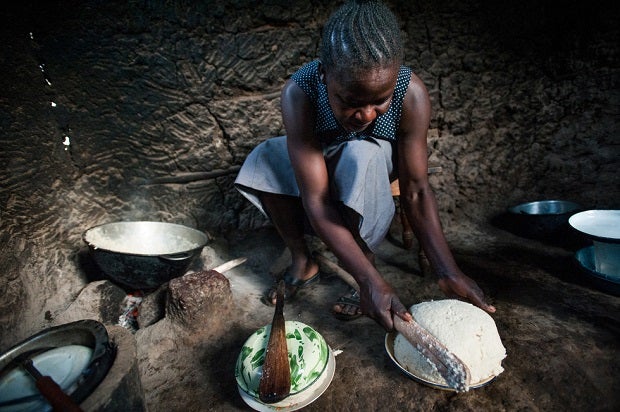Market Facilitation Is the Way Ahead, but It Needs to Do More
Kenya is a good place to start when considering market facilitation. It is the poster child of financial inclusion, with access to formal finance growing dramatically from 27 percent in 2006 to 75 percent in 2016. But, more than this, the last 10 years have also witnessed the influence of FSD Kenya (FSDK), an organization which, from the outset, has sought to follow a facilitation approach. Now, with the publication of an independent case study on FSDK, we have a chance to draw out lessons from this experience. What does this tell us about market facilitation? I’d suggest three takeaway points.

Market facilitation can (and does) work
By any reasonable reference point, FSDK has been a highly successful program. For example, it has contributed substantially to changed business models and the momentum of corporate growth and inclusion — notably the phenomena of Equity Bank and the M-Shwari product. It has been a key influence on the development of a policy and regulatory environment conducive to the era of digital finance. Its research has percolated throughout the sector and raised an understanding of financial inclusion. Its work on key “public” functions, such as payments systems, is now beginning to bear fruit. Notwithstanding the presence of other favorable factors, without FSDK, change would have been reduced or would have been much slower or simply would not have happened.
So the essence of market facilitation — that addressing underlying systemic issues that constrain the development of functional, inclusive financial markets will achieve greater, more lasting change than conventional interventions — has, to a large extent, been fulfilled in Kenya. The case study is replete with evidence; the premise behind systems approaches is validated. And that’s positive.
But, of course, there are caveats. In a number of spheres, such as service markets and cooperatives, FSDK has had limited impact. In some areas of intervention “success,” FSDK finds itself still playing an active role — for example as an adviser on regulation, as the main driver behind research, and as a technical adviser and “de-risker” in innovation. All of this raises questions about the sustainability of change.
More fundamentally, there is a jarring disconnect between, on the one hand, advances in headline financial inclusion and the conspicuous growth of the financial sector in Kenya and, on the other, the stark fact of persistently high poverty levels. And that’s less positive.
Market facilitation is a process we can understand (and therefore improve)
What explains the above picture? The main reason for success is that FSDK got the big things right as a facilitator. Its work has been analysis and knowledge-led; it has employed good-quality people who are close and credible to the market; it is seen to be independent, as a “third party” able to engage with multiple players; it is flexible, able to adapt what it offers to fit different situations; and it is able to engage on tasks that require a longer time perspective. Its status as an independent trust rather than a conventional project arrangement (a position supported by its funders) has also helped.
Where FSDK has been less successful has often been because of failings in operationalizing the approach. For example, not using systems analysis correctly to identify key constraints means actions can have the wrong focus. Similarly, not giving sufficient weight to motivations in understanding market behavior can lead to (ill-fated) technical solutions to more deep-rooted political and institutional problems. And not having a sufficiently clear picture of how a future system should function can allow drift into the continuation of direct delivery roles. The lesson from these experiences is that there are operational disciplines and frameworks that should be used in putting market facilitation into practice. And these can be learned.
Successful facilitation is likely to take us into difficult issues on the role of finance
Most of FSDK’s work has been technical in scope, concerned with capacities, information, coordination, etc. Yet it is clear that key systemic constraints to inclusive finance in Kenya are also political in nature — concerned, in particular, with incentives.
Most important here is the central “So what?” question for all organizations engaged in financial inclusion. Kenya’s finance market may well now be working slightly better for poor households and allowing them to manage their lives better. But it is clear that it is working even better for others — for middle-income consumers and, in particular, for the supply-side of the finance market which, with higher revenues and profits, has prospered throughout Kenya’s “inclusion years.” As pointed out in Mayada El-Zoghbi’s blog, finance which is more transformational for poor people (i.e., inclusive) would need to connect better with the real economy (like agriculture) and real services (like health). But why should banks change and innovate into riskier areas when there are easier ways of making money?
In this context, any valid change process has to be rooted in the incentives shaping market players’ behavior. This includes not just the regulatory environment for banks but the broader, implicit social contract shaping the role finance plays in economies and societies. Working in this space may be new and uncomfortable for development agencies, but the experience in Kenya suggests that it is a necessary direction of travel if finance is to become genuinely inclusive. And while this is challenging, fortunately the frameworks and guidance used in market facilitation have equal relevance in considering how to engage in this new frontier.




Add new comment